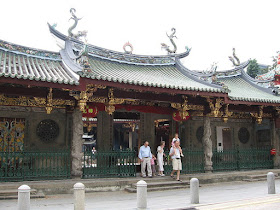Recently, television screens are filled with pictures of a stream of mostly Arab refugees wandering into Europe. Many Europeans are disturbed at the images of sheer desperation but are also worried about the future impact of accepting these refugees.
One may argue these refugees are simply 'collateral damage' from the various invasions and wars (Afghanistan, Iraq, Libya and Syria) waged by Western powers in the name of freedom and democracy. One may also pontificate about the moral obligation Europe, particularly NATO member states, have towards refugees from war torn regions of the Middle East.
 |
| Note the countries accepting the largest refugee populations in the world, based on UN data, are not wealthy, e.g. Lebanon, Pakistan, Turkey. |
Let us not do either and, instead, take a look at a few numbers.
According to the CIA, Iraq has an estimated population of 37 million people and Syria 17 million. Simple mathematics suggests that if Europe hypothetically accepts and relocates the entire living populations of both Syria and Iraq, i.e. 54 million souls, they will Europeans will still account for just about ten percent of Europe's current population of over 500 million people. In other words, 'existing' European residents will comprise 90 percent of the population even after such a large (and unrealistic) dislocation of populations.
Undoubtedly, there are issues of geographic concentrations, etc. but then these refugees are 'Yuppie Migrants.' They are better educated than the average economic migrant of the last few centuries.
 |
| Refugees march through Hungary in August 2015 |
Now take a look at some historic numbers from Southeast Asia.
Singapore and the broader Malaya region (today's Malaysia) was virtually exclusively inhabited by various Malay speaking peoples from the region in 1819. Then in 1819 the British East India Company established its presence and colonized the island for king and country. Subsequently, British colonial authorities opened up the floodgates to new arrivals (this is not the place to analyze the reasons for such a policy).
Immigration from China and India was so intense that Malays are a minority in Singapore. Malays now account for less than fifteen percent of Singapore's population. In Malaysia, non-Malays constitute approximately forty percent of the country's population. The demographics of Singapore and Malaya have changed indescribably since the advent of colonialism.
Here is an account of events from Singapore published in 1846. It reads much like events pertaining to the European Refugee Crisis of today.
Incessant Chinese migrant arrivals stretch colony's infrastructure
Singapore's authorities are overwhelmed by the daily arrival of thousands of economic migrants from China and India. The wave of immigrants, primarily from China's southern Fujian province, arrive at a make-shift jetty on Telok Ayer Street. Thence, the fortunate souls who survive the perilous weeks long sea journey immediately proceed to the nearby Thian Hock Keng Temple to give thanks to the Goddess of the Seas – Ma Zhu. Most Chinese immigrants believe their safe arrival is due in large part to Ma Zhu's helping hand.
While speaking to this correspondent about the difficulties of accommodating such a large number of immigrants, social worker John Doe said, "To add to our problems, a steady stream of migrants from the Tamil speaking Coromandel coast of India are also arriving in large numbers. Both groups are fleeing instability and poverty in their homelands and believe Singapore to be the new Promised Land."
Authorities are concerned at the impact the newcomers will have on the ethnic mix of the predominantly Malay-Muslim population of Singapore. Already, some Malays have expressed discomfort at the changing racial and ethnic mix on the island. The disgruntlement about the changing character of the island is compounded by the religious and cultural traditions of most new migrants. These Malays suggest the large influx of idol worshipping foreigners will create tensions among an otherwise harmonious complex of diverse Malay communities.
Authorities have established cells to register the migrants, though most simply make their way to the nearest Chinese clan association for assistance. The lucky ones knock on the doors of a distant relative or friend who is already residing in Singapore.
Medical practitioners are alarmed at the crowded conditions in streets surrounding South Bridge Road and are urging authorities to designate special buildings as refugee camps for the wary, hungry and often sick refugees.
Excerpt from "Incessant Chinese migrant arrivals stretch colony's infrastructure." The Straights Times, August 14, 1846.*
 |
| First port of call for many Chinese refugees arriving in Singapore was the Thian Hock Keng Temple, now a popular tourist attraction |
Singapore not only survived the onslaught of migrants from foreign lands but perhaps the island thrived as a result of the new migrants!
Europe, too, has an opportunity to reinvent itself and emerge a stronger and more dynamic continent. European nations may either do this willingly by helping integrate the current wave of refugees or, alternately, these nations may swim against the tide of history by erecting physical and psychological barriers against the new entrants.
Let us see whether European values extend beyond the continent's own borders.
* Please note this article is a fictional account of events written by the blogger in 2015. It is not a genuine excerpt from any newspaper of other publication.
__________________________________________________
Imran is a business and management consultant. Through his work at Deodar Advisors and the Deodar Diagnostic, Imran improves profits of businesses operating in Singapore and the region. He can be reached at imran@deodaradvisors.com.
No comments:
Post a Comment